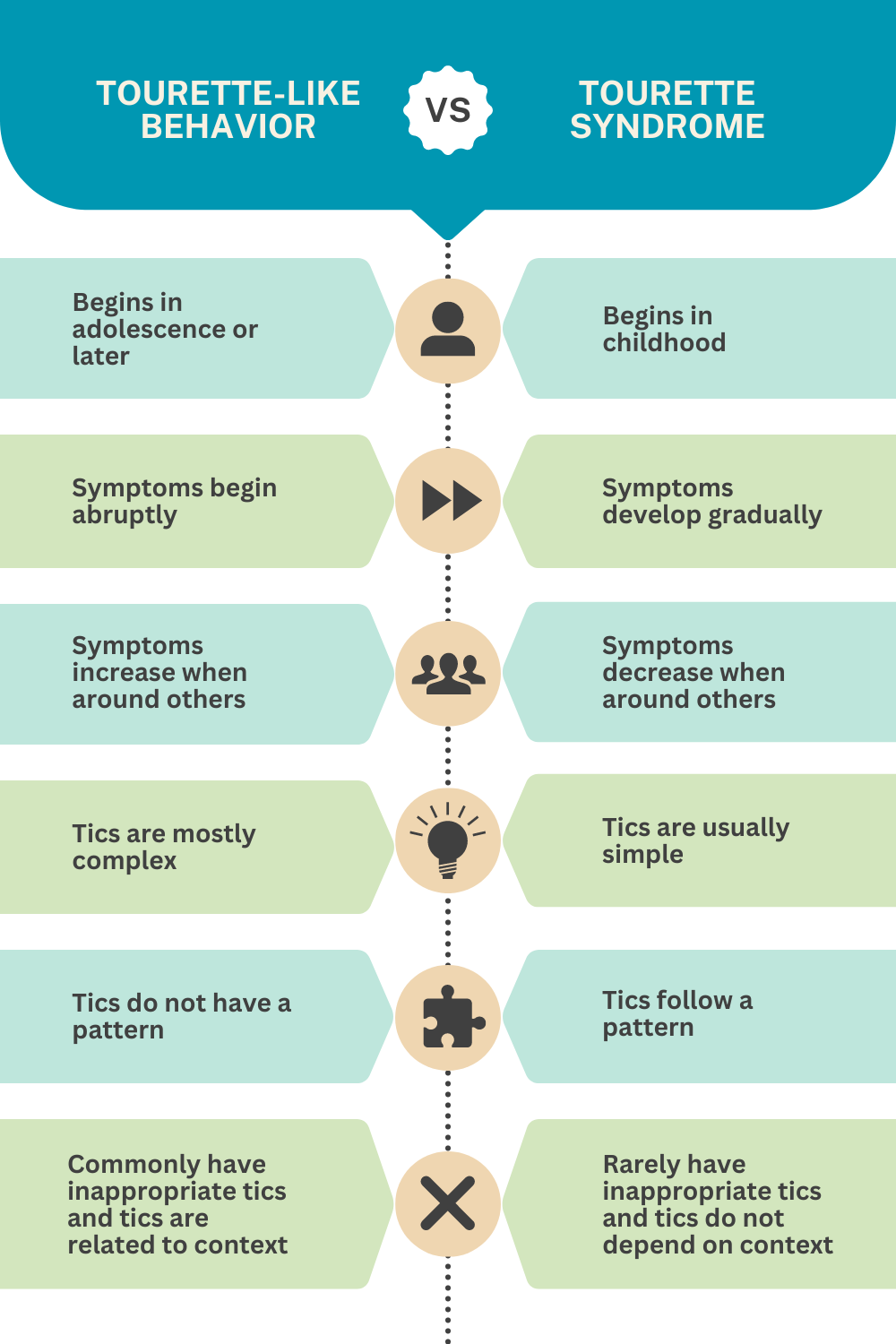Guest Writer Series: Is Social Media Causing a New Illness? A Study Investigates.
We’ve all heard of getting sick from a friend or a family member, but is it possible to contract an illness from someone across the world? Thanks to social media, a new study says it’s possible.
With over 1 billion users, the video sharing platform, TikTok has become a large entertainment source for young adults. These young users share their experience with varying illnesses, but a new study suggests these videos may be causing a new disorder.
Patients Around the World Have Similar Symptoms
The team of psychologists from Hannover Medical School in Germany noticed that patients would show up to their Tourette outpatient clinic with symptoms similar to Tourette syndrome. Each patient had watched a YouTube channel, Gewitter im Kopf, started by Jan Zimmerman, and presented with tics similar to and even identical to Zimmerman’s tics. After discovering this link, the team began to look into a possible social media contagion.
Over the next few years, the group continued to research the new illness. They found that Zimmerman was not the only large creator to release videos of Tourette symptoms. Large creators across the globe also caused new cases of Tourette-like behaviors. Interestingly, some of the patients who developed Tourette-like behaviors posted their own videos of “Tourette’s” and caused a secondary chain of patients with Tourette-like behaviors.
When discussing the concept of a mass sociogenic illness, or a mass illness caused by social forces, the study authors, led by Carolin Fremer, stated, “it was believed that outbreaks of [mass sociogenic illness] in any case require direct face-to-face contact among persons affected.” The new link between social media channels and Tourette-like behaviors led Fremer’s team to label the phenomenon as a mass social-media induced illness.
What are the Characteristics of Tourette-Like Behaviors?
The exact distinguishing characteristics of the Tourette-like behaviors are still being studied, but Fremer’s team and other teams of psychologists and neurologists have an early list of unique symptoms:
Symptoms replicate the tics of another person
Mostly complex tics (tics involving several different parts of the body or meaningful speech)
Tics do not follow a pattern of movement or vocalization
Tics often include socially inappropriate behaviors, words, or phrases
Feel a complex, uncomfortable sensation (premonitory urge) before the tic
Symptoms worsen around other people
Large number of specific symptom triggers, such as certain person or sound
Symptoms begin abruptly
Symptoms progress rapidly
While some of these symptoms are also reported in Tourette syndrome, such as the sensations before the tics, Fremer’s team explains that in Tourette-like behaviors these symptoms are often more complex, last longer, and have more variants. There are also some characteristics that are common to both disorders, such as: symptoms triggered by stress and fatigue and symptoms stopping when the person is focused (distractibility). These overlaps of symptoms make it difficult for even experts to properly distinguish the disorders.
Who is at Risk?
Tourette-like behaviors were most commonly seen in females and adolescents, further separating the disorder from Tourette syndrome, which often presents in males starting in early childhood. Fremer and her colleagues were able to identify additional risk factors for the Tourette-like behaviors, which include:
Viewing videos of Tourette syndrome and other tic disorders online
Life stressors (relationship stressors, school/work stressors, bullying, or major life changes)
Other conditions, such as: anxiety, depression, obsessive compulsive disorder (OCD), post traumatic stress disorder (PTSD), attention-deficit/hyperactivity disorder (ADHD), or autism spectrum disorder (ASD)
The link between the illness and social media is possibly due to at-risk adolescents seeking a sense of belonging. According to Fremer and her colleagues, “the majority of patients affected with [mass social media induced illness - Tourette-like behaviors] are adolescents and young adults. This suggests the period of identity formation characterized by questioning oneself, seeking new identities, and trying out new roles plays a part.”
Amanda McDonald, a Social Security Disability Expert and the co-founder of Unbound Disability Claims has an alternative hypothesis: “Unfortunately healthcare is not available to all, so many are sent to social media or sites such as WebMD to diagnose their disorder. In my experience this leads to pseudo-symptoms based on the search results.”
In the age of social media, it is not uncommon for adolescents to attempt to diagnose their symptoms using TikTok or YouTube. Since the at-risk group includes adolescents with other psychiatric and developmental conditions, it is possible that in the search for one diagnosis the teenager develops a new disorder.
How is it Treated?
Just like TikTok algorithms are perfectly designed for each user, the treatments for Tourette-like behaviors are changed to fit the unique needs and conditions of each patient. The most common treatments include:
Cognitive behavior therapy (CBT)
Habit reversal training (HRT)
Reducing triggers, including stressors
Avoiding reinforcing tics
Selective serotonin reuptake inhibitors (SSRIs)
Most of the treatments for Tourette-like behaviors focus on changing the environment and retraining the brain to stop the symptoms. Medications like SSRIs are only recommended when there are other conditions like depression and anxiety that are contributing to the disorder.
According to the Tourette Association of America, the most difficult part of treatment for well-intentioned family members is not excusing the patient from unwanted tasks such as chores. These well-intentioned excuses can further reinforce the symptoms. Additionally, the patient should avoid looking for support on video-based social media. The videos of tics on these platforms can further reinforce the behaviors or even make them worse.
Medication is not the answer for Tourette-like behaviors that occur after consuming social media. Photo by Bermix Studio on Unsplash.
Why is it Dangerous to Mislabel the Disorder as Tourette Syndrome?
While Tourette syndrome and Tourette-like behaviors present similarly the treatments for one are not always helpful for the other. Medications used for Tourette syndrome tics, including Abilify (aripiprazole) or Risperdal (risperidone), are not helpful for Tourette-like behaviors. Using these medications unnecessarily opens the patient up to risky side effects for no benefit.
A misdiagnosis can also water down how people perceive Tourette syndrome. While Tourette-like behaviors are caused by a real disorder, the symptoms have a tendency to look fake and over the top. This makes it harder for the public to determine what real Tourette syndrome looks like and makes it harder for Tourette syndrome patients to be taken seriously.
For patients who are looking for a diagnosis of their tics, the Tourette Association of America recommends keeping a journal of your symptoms or bringing a video of the symptoms. It is also especially important to tell your doctor about when your symptoms began, how quickly they progressed, and if you viewed social media posts of Tourette syndrome leading up to the symptoms. These questions can help your doctor get you closer to the right diagnosis and closer to symptom relief.



